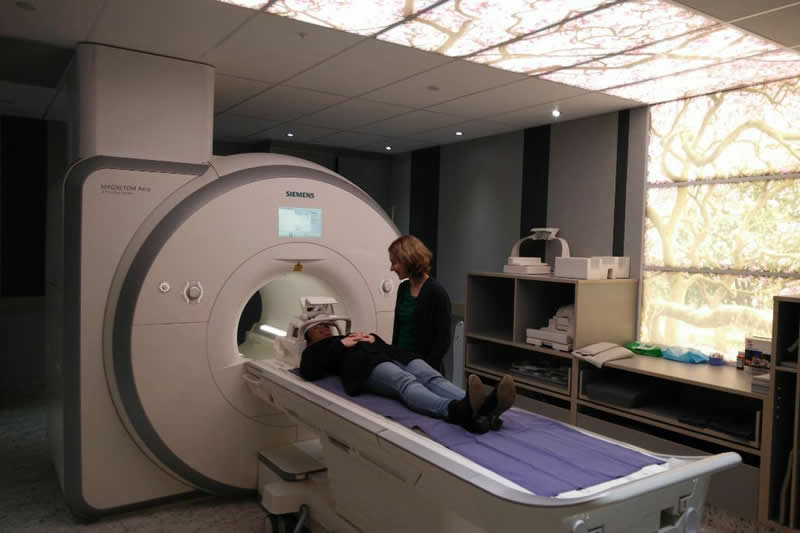Summary: Neuroimaging data sheds light on the brain networks used to produce speech. The findings could help in the development of new treatments for those with speech disorders.
Source: University of Canterbury
There is no known cure for stuttering and other speech disorders such as dysarthria and apraxia of speech, but new research by a University of Canterbury (UC) academic involves scanning the brain to find out what causes speech production problems.
Dr Catherine Theys, a senior lecturer in UC’s School of Psychology, Speech and Hearing, has collaborated with researchers at KU Leuven (Belgium), the University of Toronto (Canada) and the University of Otago on the paper, Brain activation during non-habitual speech production: Revisiting the effects of simulated disfluencies in fluent speakers, which has been published today [1 Feb] in the scientific journal PLOS ONE.
She believes that understanding the neural basis of speech production problems will lead to effective and personalised treatment approaches.
“My research in the Speech-Language Neuroscience Lab at UC focuses on how we produce speech, and what happens at the level of the brain when people have speech difficulties, especially in people who stutter. I work with people who started to stutter as a child, but also with adults who started to stutter following brain injuries or neurodegenerative diseases.”
Using fMRI scanners, Dr Theys’ studies aim to identify differences at the level of the brain that cause stuttering.
“This knowledge helps us to create better ways to assess and treat speech disorders. This is important because being able to communicate effectively has a hugely positive effect on health and wellbeing.”
For the study, researchers scanned the brains of fluent speakers and looked at what happens when asked to change the way they normally speak.
“This helps us to understand the brain networks that we use to produce speech. It also helps us to understand what happens when we ask people to change the way they speak during speech treatment, for example by asking people to speak slower, or stutter voluntarily,” Dr Theys says.

“We asked our participants to repeat the first letter of a word. This is a type of disfluency that is typical in the speech of people who stutter. Interestingly, speaking in this new disfluent manner led to increases in activation in the brain networks we use to produce speech. This included brain areas responsible for the planning and starting mechanisms of speech, and also areas that monitor your movements to detect errors. This information is valuable to help us identify the causes of speech production problems, and help us to develop better treatment approaches for people with speech disorders.”
This study on the effects of non-habitual speech production is important as it shows what is happening in our brains when we produce speech in a novel manner, Dr Theys says.
Changing someone’s speech pattern is a tool that is often used during the assessment and treatment of people with speech disorders, including stuttering, dysarthria and apraxia of speech, she says. These speech disorders can be developmental, but also affect people following stroke, traumatic brain injury, or neurodegenerative diseases such as Parkinson’s disease.
“Having speech production problems can have a big impact on the health and wellbeing of the speaker, but also on their whānau. Understanding the changes in brain functioning that cause these speech problems will help us to create more efficacious and efficient treatment approaches for these people.”
Source:
University of Canterbury
Media Contacts:
UC Communications – University of Canterbury
Image Source:
The image is credited to University of Canterbury.
Original Research: Open access
“Brain activation during non-habitual speech production: Revisiting the effects of simulated disfluencies in fluent speakers”. Catherine Theys, Silvia Kovacs, Ronald Peeters, Tracy R. Melzer, Astrid van Wieringen, Luc F. De Nil.
PLOS ONE doi:10.1371/journal.pone.0228452.
Abstract
Brain activation during non-habitual speech production: Revisiting the effects of simulated disfluencies in fluent speakers
Over the past decades, brain imaging studies in fluently speaking participants have greatly advanced our knowledge of the brain areas involved in speech production. In addition, complementary information has been provided by investigations of brain activation patterns associated with disordered speech. In the present study we specifically aimed to revisit and expand an earlier study by De Nil and colleagues, by investigating the effects of simulating disfluencies on the brain activation patterns of fluent speakers during overt and covert speech production. In contrast to the De Nil et al. study, the current findings show that the production of voluntary, self-generated disfluencies by fluent speakers resulted in increased recruitment and activation of brain areas involved in speech production. These areas show substantial overlap with the neural networks involved in motor sequence learning in general, and learning of speech production, in particular. The implications of these findings for the interpretation of brain imaging studies on disordered and non-habitual speech production are discussed.






